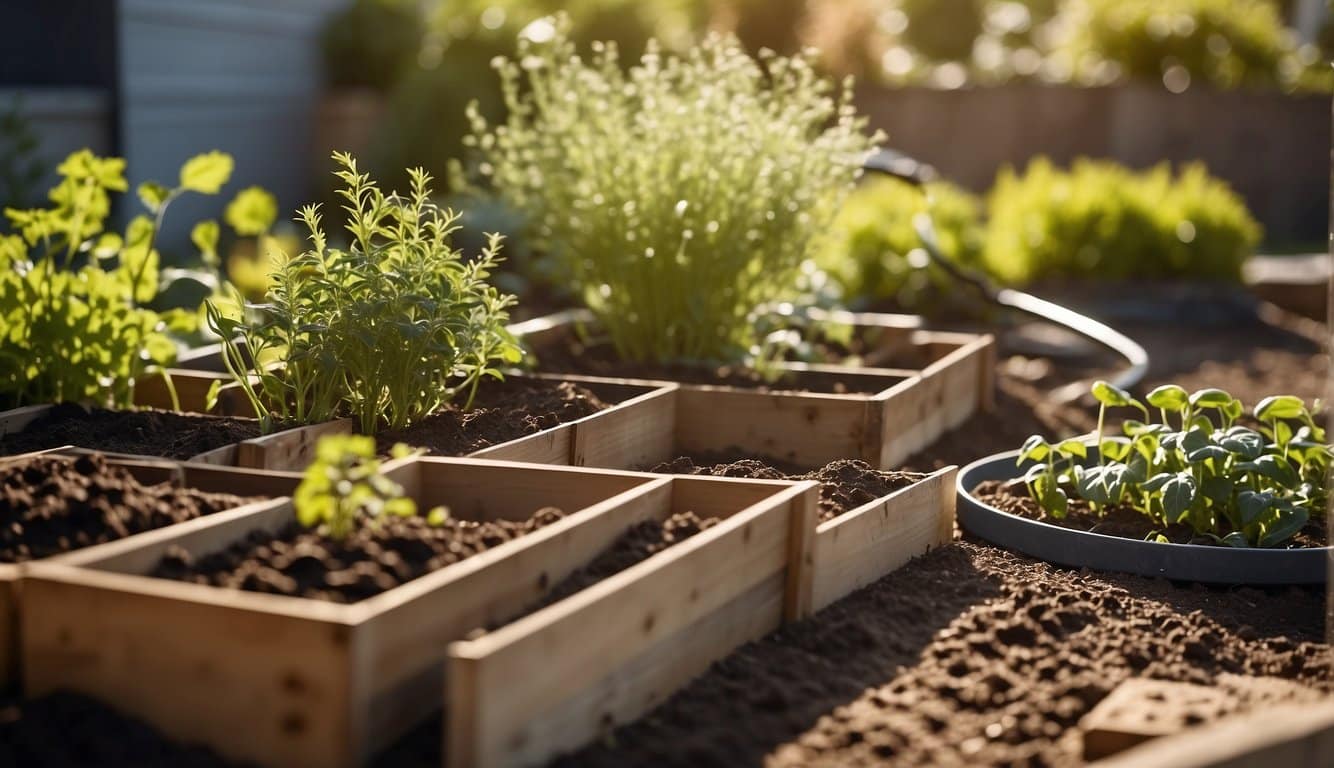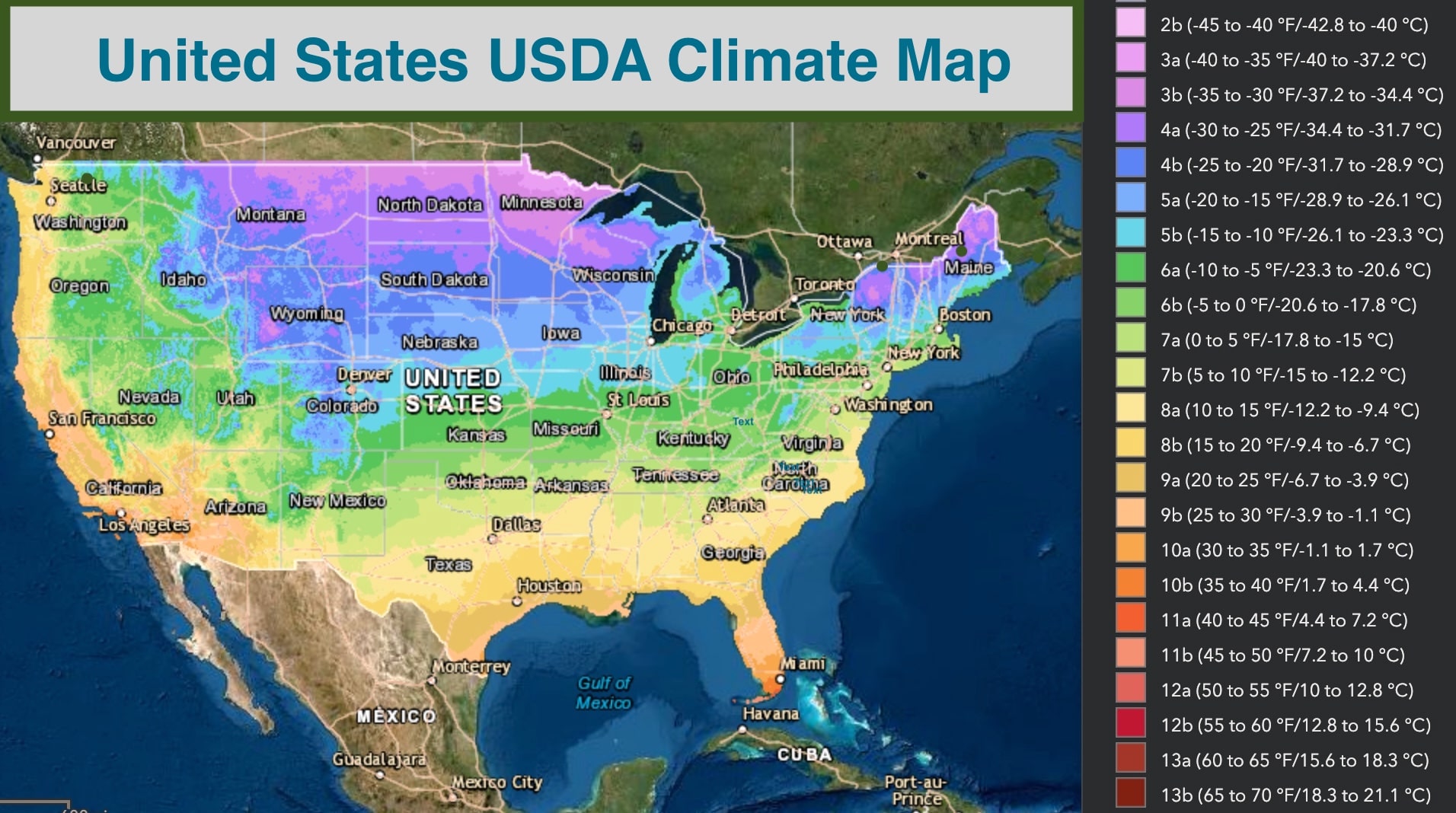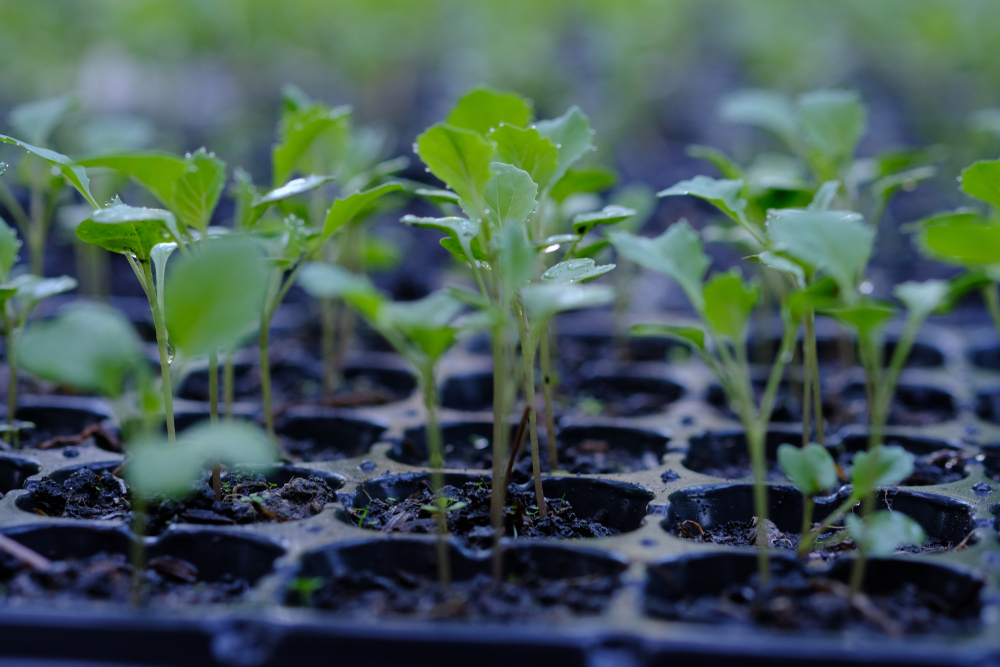Planning Your Vegetable Garden
Before you begin planting, careful planning can ensure a bountiful and enjoyable experience creating your vegetable garden in the spring.
Start by considering the following steps:
- Select the Right Location: Your garden should be in an area that receives at least 6-8 hours of sunlight per day. Make sure it’s also near a water source for easy irrigation.
- Determine Bed Type and Size: Decide if you’re going to plant in the ground, use raised beds, or containers.
For beginners, a manageable garden size is a 10′ x 10′ plot or smaller raised beds like a 4′ x 4′ or 4′ x 8′.
- Soil Preparation: Test your soil to find out the pH and nutrient levels.
Amend the soil with compost to improve fertility and texture. Ensure the soil is dry enough; it shouldn’t form a ball when squeezed.
- Choose Your Vegetables: Pick 3 to 5 of your favorite vegetables to start.
Consider the vegetables that thrive in your climate during the spring.
- Plan Your Layout: Space plants appropriately for growth. Use companion planting principles to enhance growth and deter pests.
- Get Your Timing Right: Investigate the last frost date in your area, and plan to plant after this risk has passed. Some cool-season crops can be planted earlier.
- Supplies and Tools: Gather all necessary tools, such as shovels, rakes, and pruners.
Clean and sharpen them in preparation for use.
Preparing the Garden Location
The early stages of establishing a successful vegetable garden hinge upon choosing an optimal location, ensuring soil health, and arranging your planting area for ease of access and growth.
Selecting the Right Spot
- Sunlight: Aim for a spot that receives at least 8 hours of direct sunlight per day. Vegetables thrive with plenty of sunshine.
- Drainage: Observe the area after a rainstorm. Avoid places where water pools for prolonged periods.
- Proximity: Keep your garden close to a water source and within easy reach for regular maintenance.
Testing and Amending Soil
- Soil Testing: Take a soil sample to test for pH and nutrient levels. Your local extension office can assist with testing.
- Amendments: Depending on the test results, you may need to add compost to enrich the soil or adjust pH levels using specific soil amendments.
- Tilling: For heavy soils, till to a depth of 8-12 inches to improve aeration and root penetration.Use a garden fork for smaller areas to minimize soil compaction.
Setting Up Garden Beds
- Raised Beds: Consider a 4′ x 4′ or 4′ x 8′ raised bed for a manageable beginner size with good drainage and easy access.
- Layout: Space your garden beds to allow for walking paths, minimizing the need to step on planting areas, which compacts the soil.
- Materials: Use untreated wood or other safe materials to construct raised beds to prevent any chemicals from leaching into the soil.
Choosing Your Vegetables
Before you plunge your spade into the soil, selecting which vegetables to grow in your spring garden requires consideration of your local climate and the vegetables’ preferences.
Plant Hardiness Zones
- Identify your zone: Refer to the USDA Plant Hardiness Zone Map to determine the specific zone of your garden.
- This insight helps you select vegetables that will thrive in your local climate conditions.
- Consider season length: Cold-hardy vegetables can withstand lower temperatures and are ideal for early planting.Verify the expected last frost date for your zone to inform your planting timeline.
Picking the Right Vegetable Varieties
- Match vegetables to your zone: Ensure that the vegetables you select are suited for growing in your area’s conditions.For instance, Beets can tolerate cooler temperatures and can be sown about 4 weeks before the last frost date.
- Diversity within a small space: If you’re working with limited space like a 4′ x 4′ raised bed, choose to plant a selection of vegetables that can grow well together.For example, you can combine leafy greens with root vegetables.
- Growth habits & space requirements: Consider the growth behaviors of different vegetables.Some, like tomatoes, require support structures, while others, like lettuce, may have less extensive spacing requirements.
Planting Your Vegetables
Embarking on your spring vegetable garden adventure begins with planting. Knowing when and how to plant your seeds or seedlings is the cornerstone of a thriving garden. Here’s how to start off on the right leaf.
Starting Seeds Indoors
Starting your seeds indoors allows you to get a head-start on the growing season. This is particularly helpful in regions with shorter growing windows due to colder climates. Follow these steps:
- Choose your seeds: Select a variety of vegetables that you enjoy and that are known to grow well in your area.You can find guidance on sowing times and techniques for various vegetables.
- Prepare your containers: Use seed trays or small pots with drainage holes filled with a sterile seed-starting mix.
- Plant your seeds: Sow seeds at the proper depth according to their size; smaller seeds are planted just below the surface, while larger seeds need to be planted deeper.
- Provide consistent moisture: Keep the soil moist but not waterlogged; a spray bottle can help you mist the soil gently.
- Ensure adequate warmth and light: Seeds need warmth to germinate, so place them in a warm room or use a heat mat.Once they sprout, plenty of light is essential–a sunny window or grow lights can work.
Direct Sowing Seeds Outdoors
Some seeds prefer to be sown directly into the garden bed. They either don’t transplant well or grow quickly enough that starting indoors isn’t necessary.
- Wait for the right temperature: Soil temperature is crucial for seed germination, so ensure frost has passed and the ground is warm.
- Prepare your garden bed: Clear the bed of debris and loosen the soil. Working in compost can improve soil structure and provide nutrients.
- Sow your seeds: Plant at the recommended depth and distance apart for each vegetable.Smaller seeds will be shallowly planted, while larger ones will need more depth.
- Watering: After planting, water your newly sown seeds gently but thoroughly to encourage germination.
Transplanting Seedlings
After your indoor starters have grown strong enough and the outdoor temperatures are hospitable, it’s time to move your seedlings to their permanent outdoor location.
- Harden off your seedlings: Gradually expose your plants to outdoor conditions over a period of 7-10 days to acclimate them and reduce transplant shock.
- Prepare the transplant site: Just like direct sowing, make sure your garden bed is ready to welcome new plants.
- Transplant carefully: Dig a hole that is big enough for the seedling’s root ball, place it in, and gently cover with soil.
- Water and support: After planting, water the seedlings to help settle the soil around the roots and add any necessary supports, such as stakes for tomatoes.
Garden Maintenance
For a thriving vegetable garden in the spring, paying attention to watering, mulching, weeding, thinning, and pest control becomes pivotal. These maintenance activities promote healthy growth and maximize your garden’s productivity.
Watering and Mulching
- Watering: Your vegetables need consistent moisture to grow, especially during the seedling stage.
- Aim for 1 inch of water per week; use a rain gauge to monitor.
- Water in the early morning to reduce evaporation and fungal diseases.
- Mulching: A layer of mulch conserves water and regulates soil temperature.
- Apply 2-3 inches of organic mulch such as straw or grass clippings.
- Keep mulch a few inches away from plant bases to prevent rot.
Weeding and Thinning
- Weeding: Weeds compete with your vegetables for nutrients and water.
- Remove weeds regularly by hand or with a hoe. Take care not to disturb your plants’ roots.
- Thinning: Overcrowded seedlings can lead to poor air circulation and hinder growth.
- Thin seedlings according to the recommended spacing for each vegetable type.
- Discard or transplant the extra seedlings to avoid waste.
Pest and Disease Control
- Pest Control: Insects can be a major issue, munching on leaves and spreading disease.
- Check plants frequently for signs of pests and use appropriate methods like insecticidal soap or natural predators to manage them.
- Disease Control: Fungal and bacterial diseases can quickly ruin a garden.
- Ensure good air flow by not overcrowding plants and prune any diseased foliage.
- If diseases appear, treat with fungicides or bactericides as needed. Follow safety instructions carefully.
Frequently Asked Questions
Starting a spring vegetable garden requires careful planning and consideration of factors such as soil preparation, suitable plants, and timing. Here, we address common queries to help you establish a thriving garden this season.
What steps are involved in preparing the soil for a spring vegetable garden?
To prepare your soil, start by:
- Clearing out any debris or weeds.
- Testing the soil pH and nutrient levels to understand what amendments may be needed.
- Tilling the soil to improve aeration and drainage.
- Enriching the soil with compost or other organic matter to provide essential nutrients.
Which vegetables are ideal for planting in the early spring season?
The best vegetables for early spring include:
- Spinach
- Peas
- Radishes
- Leafy greens, such as lettuce and kale
These vegetables can handle the cooler temperatures typical of early spring.
What is the recommended timeline for starting a vegetable garden in the spring?
A general timeline for starting a spring vegetable garden entails:
- Starting indoor seedlings 6-8 weeks before the last expected frost date.
- Preparing the garden beds as soon as the soil is workable.
- Transplanting seedlings or planting seeds outdoors after the danger of frost has passed.
How can I improve soil fertility for a productive vegetable garden this spring?
Improve soil fertility by:
- Incorporating homemade compost into the soil, which provides nutrients and improves soil structure.
- Using organic or slow-release fertilizers tailored to your specific vegetable needs.
Which flowers can be planted alongside vegetables for an early spring garden?
Flowers such as:
- Marigolds
- Nasturtiums
- Calendula
are not only visually appealing but also attract beneficial insects and can help with pest control in the vegetable garden.
What are some important considerations for planting a spring vegetable garden in specific regions, such as Texas?
When planting in Texas, bear in mind:
- The state’s diverse climate zones, which impact planting dates.
- Local frost dates and soil temperatures.
- For more targeted information, explore a Zone 8 spring vegetable planting schedule which matches much of Texas’ growing conditions.



